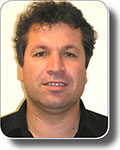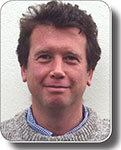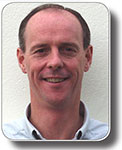Porosity trends and reservoir quality in the Bass Basin
Natt Arian A , Peter Tingate A and Richard Hillis AUniversity of Adelaide
The APPEA Journal 48(1) 227-240 https://doi.org/10.1071/AJ07014
Published: 2008
Abstract
A study of porosity trends and reservoir quality of the Eastern View Group (EVG) of the Bass Basin has been undertaken.
Previous exploration in the Bass Basin targeted the Upper EVG due to its stratigraphic equivalence to the hydrocarbon-rich Upper Latrobe Group in the Gippsland Basin. Although this exploration has proved that mature source rocks in the basin have generated and expelled hydrocarbons, the relative lack of hydrocarbon charge into the Upper EVG has previously been identified as a major exploration risk. If hydrocarbon generation is adequate, the lack of Upper EVG accumulations is probably related to limited vertical migration. Thus the reservoir quality of the most relatively charged Middle and Lower EVG is important in determining the basins’ prospectivity.
Sonic log data were deemed to be the most appropriate to determine porosity for this study. Wyllie, Clemenceau, Hunt-Raymer and modified Hunt-Raymer equations were used to calculate porosity. The results from each method were compared with available core plug data and the best method (modified Hunt-Raymer) selected. The modified Hunt-Raymer derived porosity trends were examined both vertically and laterally in the basin.
In some sandstone intervals an increase in porosity with depth was observed. Thicker sand bodies can exhibit average calculated porosity of approximately 20% even at depths greater than 3,000 m. Several sands in the Middle EVG show a localised increase in porosity with depth, which is attributed to the fining upwards (coarsening downwards) of fluvial channels. The presence of good reservoir sands in the Middle and Lower EVG closer to mature source rocks in the basin is very encouraging as it makes deeper exploration in the Bass Basin more attractive.

Natt Arian is a PhD student at the Australian School of Petroleum (ASP), University of Adelaide. He obtained his BSc (Hons) from Saladin University (Kurdistan 1990). His research interests are in basin modelling and structural geology. Natt has worked for and consulted to Australian and overseas oil companies. Member: AAPG, PESA and SEG narian@asp.adelaide.edu.au |

Peter Tingate is a Senior Geologist with GeoScience Victoria and an adjunct lecturer at the Australian School of Petroleum, University of Adelaide. He completed his PhD at the University of Melbourne in 1990 and began work on research projects at the ASP (formerly NCPGG). His main interests are basin modelling, diagenesis of sedimentary rocks and geological storage of CO2. Member: PESA. ptingate@dpi.vic.gov.au |

Richard Hillisis the State of South Australia Professor of Petroleum Geology and Head of the Australian School of Petroleum (of Adelaide). He graduated BSc (Hons) from Imperial College (London, 1985), and PhD from the University of Edinburgh (1989). His research interests are in petroleum geomechanics and sedimentary basin tectonics. He leads a group of nine researching these topics at the Australian School of Petroleum. He has published approximately 100 papers, edited two books and has consulted to and run short courses for many Australian and international oil companies. Richard is a non-executive director of JRS Petroleum Research Pty. Ltd. and Petratherm Ltd. Member: AAPG, AGU, ASEG, EAGE, GSA, GSL, PESA, SEG and SPE. rhillis@asp.adelaide.edu.au |


